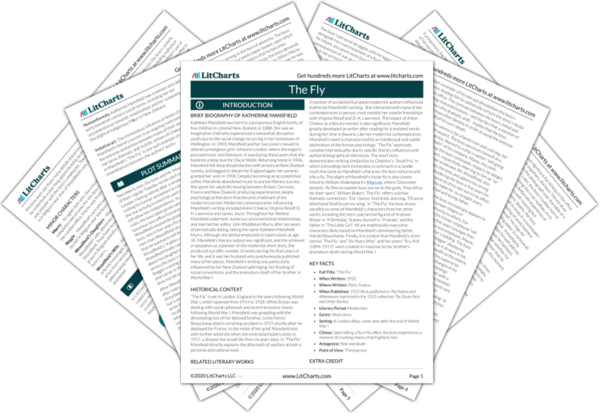A number of acclaimed European modernist authors influenced Katherine Mansfield’s writing. She interacted with many of her contemporaries in person, most notably her volatile friendships with Virginia Woolf and D. H. Lawrence. The impact of Anton Chekov as a literary mentor is also significant; Mansfield greatly developed as writer after reading his translated works during her time in Bavaria. Like her modernist contemporaries, Mansfield’s work is characterized by an intellectual and subtle exploration of the human psychology. “The Fly” expresses complex intertextuality due to specific literary influences and authorial biographical references. The short story demonstrates striking similarities to Chekhov’s “Small Fry,” in which a brooding clerk incinerates a cockroach in a candle much the same as Mansfield’s character the boss tortures and kills a fly. The plight of Mansfield’s titular fly is also closely linked to William Shakespeare’s
King Lear, where Gloucester laments “As flies to wanton boys are we to the gods; They kill us for their sport.” William Blake’s “The Fly” offers a similar thematic connection: “For I dance, And drink, and sing, Till some blind hand Shall brush my wing.” In “The Fly,” the boss draws parallels to some of Mansfield’s characters from her other works, including the stern, patriarchal figures of Andreas Binzer in “A Birthday,” Stanley Burnell in “Prelude,” and the father in “The Little Girl.” All are traditionally masculine characters likely based on Mansfield’s domineering father, Harold Beauchamp. Finally, it is evident that Mansfield’s short stories “The Fly” and “Six Years After” and her poem “To L.H.B (1894-1915)” were created in response to her brother’s premature death during World War I.
